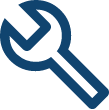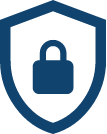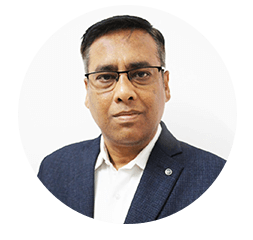The Comprehensive Guide to Microsoft Power Platform’s Capabilities
Power Platform is adopted by a staggering 97% of Fortune 500 companies, while Gartner suggests that an impressive 65% of business challenges can find solutions through this versatile platform. Microsoft Power Platform is a comprehensive suite of powerful tools designed to empower businesses to create custom solutions, automate workflows, analyze data, and build AI-powered virtual agents. Organizations can unlock their full potential and streamline their operations with its four main components – Power Apps, Power Automate, Power BI, and Power Virtual Agents.
Introduction to Microsoft Power Platform
Power Apps is a low-code development platform that allows users to build custom business applications without extensive coding knowledge. It provides a user-friendly interface with drag-and-drop functionality, enabling rapid app development. Integration with various data sources such as SharePoint, Dynamics 365, and Azure SQL Database makes accessing and utilizing critical information easier.
Power Automate is a workflow automation tool that enables users to create automated processes across multiple applications and services. With its pre-built connectors for popular applications like Office 365, Salesforce, and Twitter, businesses can automate repetitive tasks and streamline operations. This not only saves time but also reduces manual effort significantly.
Power BI is a powerful business analytics tool that helps organizations visualize and analyze data from various sources. Its advanced data visualization capabilities include interactive dashboards and reports that provide valuable insights into business performance. Integration with Excel, SQL Server, and Azure Data Lake Storage enables seamless access to data for analysis purposes.
Power Virtual Agents is a chatbot development platform that allows businesses to create AI-powered virtual agents. These virtual agents can handle customer inquiries through natural language processing capabilities. Integration with other components of the Microsoft Power Platform, such as Power Apps and Power Automate, enhances their functionality, and provides a more personalized customer experience.
Key Features and Capabilities of Microsoft Power Platform
1] Power Apps:
- Build custom apps without extensive coding knowledge: Power Apps empowers users to create custom applications using a low-code development approach. This means that businesses can develop solutions tailored to their specific needs without the need for extensive technical expertise.
- Integration with various data sources: Power Apps provides seamless integration with various data sources, including SharePoint, Dynamics 365, and Azure SQL Database. This allows businesses to access and utilize critical information from different systems within a single application.
2] Power Automate:
- Pre-built connectors for popular applications and services: Power Automate offers many pre-built connectors for popular applications and services such as Office 365, Salesforce, and Twitter. This makes it easier for businesses to automate their workflows across different platforms.
- Automation of repetitive tasks: With Power Automate, businesses can automate tasks such as data entry, approvals, and notifications. By reducing manual effort, organizations can improve efficiency and productivity.
Percentage reduction in manual effort achieved through automation using Power Automate
|
Task |
% Reduction in Manual Effort |
|
Data Entry |
80% |
|
Approvals |
70% |
|
Notification |
60% |
3] Power BI:
- Advanced data visualization capabilities: Power BI offers advanced data visualization capabilities that allow businesses to create interactive dashboards and reports. These visualizations enable users to explore data insights effectively and make informed decisions based on real-time information.
- Integration with various data sources: Power BI seamlessly integrates with various data sources such as Excel, SQL Server, Azure Data Lake Storage, etc. This enables easy access to the relevant data required for analysis purposes.
Top five industries that benefit from using Power BI for data visualization.
- Retail: Visualizing sales and inventory data to identify trends and optimize product offerings.
- Healthcare: Analyzing patient data to improve treatment outcomes and resource allocation.
- Manufacturing: Monitoring production processes and optimizing supply chain operations.
- Finance: Analyzing financial data to identify patterns, forecast trends, and make strategic decisions.
- Education: Tracking student performance, evaluating curriculum effectiveness, and identifying areas for improvement.
4] Power Virtual Agents:
- Natural language processing capabilities: Power Virtual Agents use natural language processing to understand user inquiries and provide relevant responses. This allows businesses to create conversational chatbots that can handle customer inquiries effectively.
- Integration with other Power Platform components: Power Virtual Agents seamlessly integrate with other components of the Microsoft Power Platform, such as Power Apps and Power Automate. This integration enhances their functionality and provides a more comprehensive solution for businesses.
Benefits of Implementing Microsoft Power Platform
The benefits of implementing Microsoft Power Platform are as follows:
1] Increased Productivity and Efficiency
- Automation of manual tasks reduces human error and saves time.
- A centralized platform for managing and analyzing data improves decision-making processes.
2] Quantifying Cost Savings: How Microsoft Power Platform Boosts Business Productivity
- Organizations saved an average of $6 million annually through Microsoft Power Platform automation.
- Time saved on manual processes resulted in a 20% increase in productivity across various industries.
3] Enhanced Collaboration and Communication
- Seamless integration with other Microsoft tools fosters collaboration among team members.
- Real-time data insights enable effective communication and informed decision-making.
4] Scalability and Customizability
- A flexible platform that can be tailored to specific business needs.
- Ability to scale applications and workflows as business requirements evolve.
Conclusion
Microsoft Power Platform offers various capabilities to transform businesses and drive digital transformation. Its four main components – Power Apps, Power Automate, Power BI, and Power Virtual Agents – provide organizations with the tools to build custom applications, automate workflows, analyze data, and create AI-powered virtual agents. By leveraging these capabilities, businesses can increase productivity, enhance collaboration and communication, and achieve scalability and customizability. To learn more about how Embee can help you leverage power platform’s complete potential.




















































